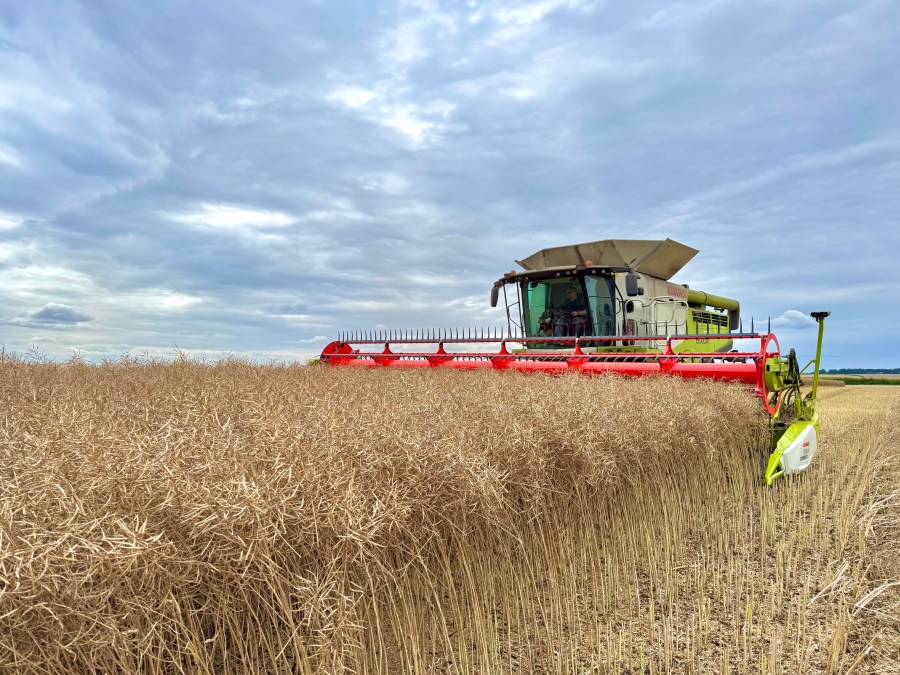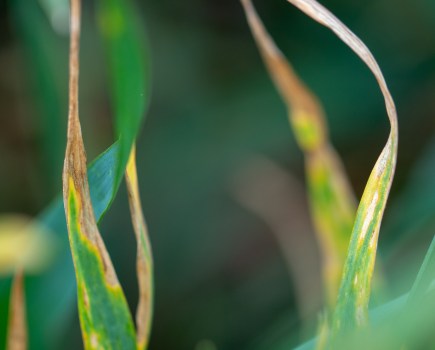Lincolnshire farmer Tim Lamyman has defied the exceptionally dry season to bring in a record-breaking crop of oilseed rape.
His achievement involves a 8ha field of September-sown LG Avenger, which subsequently delivered a seed yield of 7.52t/ha – breaking the unofficial world record of 7.2t/ha, set in 2019 by Richard Budd.
Of the 85ha of OSR grown at Worlaby Farms in 2024/25, 80% was Avenger, sown between 10-20 September. “All fields looked phenomenal throughout the season with very little to choose between the sowing dates,” says Tim.
“It’s the first year I’ve grown Avenger and I love the variety – it has fantastic autumn vigour which was one of the main reasons for choosing it. We wanted a variety we can sow later to help mitigate flea beetle risk, and one that gets up and away quickly to establish a strong canopy going into the winter.”
Later drilling
Having worked with Limagrain Field Seeds UK and United Oilseeds to develop ways of mitigating cabbage stem flea beetle damage, Tim is convinced that sowing a vigorous variety later, ideally after 5-10 September, is the best way to avoid the worst of CSFB damage.
“Even though flea beetle pressure wasn’t particularly high last autumn, I can see that in a bad year, the vigour of Avenger should help get through those issues. If you’re later drilling and have that vigour, you have a much better chance of getting a crop established than if you’ve drilled earlier in the season.”
All of Tim’s OSR ground is usually prepared using the farm’s Väderstad TopDown and Carrier cultivators, before sowing with a 6m Väderstad Rapid drill. “Because we’re drilling later and have a lot of stones in our soil, we prefer a higher seed rate of 4kg/ha; equivalent to around 65 seeds/m2, to make sure we establish a good, thick crop.”
Supporting the vigour of Avenger with a comprehensive nutritional programme is essential to building a big biomass crop and high yield potential, he adds.
“It’s a big, bold plant which you’re making grow even faster, so it’s all beneficial. We’ve seen in the past that going down the route of shorter, low biomass OSR simply hasn’t worked, so in my view, the bigger the crop, the higher the yield.”
Pod shatter
Managing the large biomass crop hasn’t been an issue either, he says. “It’s a really well-structured variety, which also has the benefit of excellent pod shatter resistance.”
Tim highlights that disease control has been fairly straightforward, based around a standard programme including tebuconazole, prothioconazole, azoxystrobin and one SDHI fungicide. “It’s nothing expensive, yet crops have stayed really clean throughout.”
Given the exceptional performance of Avenger this season, Tim is sowing it again across his entire 90ha of OSR next season; a decision already made before crops were harvested, given how well they looked, he concludes.




